- Know about the Tibetan Colony in Delhi and why Majnu-Ka-Tilla is a way of life, more than just a residential colony.
This
is a narrative of inspiration which makes one go down the ripples of despair,
in a congruent metamorphosis, with the hope that better times would come. This is
possible because of the faith that we have in the Divine.
Hopes,
Dreams and Aspirations can never be driven by anything which is external or is
analytical. It has to be driven by the arriving of the time. When the time is
right things will happen and sometimes when the time is not right the key is to
accept that and move on.
“We make a living by what we get. But we make a life by what we give.” Is what is commonly echoed at the Majnu Ka Tilla in New Delhi which houses the Tibetan Colony comprising primarily of Tibetan refugees. They make a living out of the all the activities in the colony. These activities help them earn a living and maintain a lifestyle. That is precisely what makes them stronger too.
‘What is it you like here? I casually asked a seventeen-year-old girl, who vigorously pounds the clothes under tube-well water while her neighbour’s toddler enjoys getting wet.
With her beautiful face beaming with joy she pauses, spreading her arms across an expanse of rickety shanties, a landfill of garbage, a swamp of fetid water and responds, ‘Bas,
sab kuch! Sab kuch’! (Well, everything, like everything!)
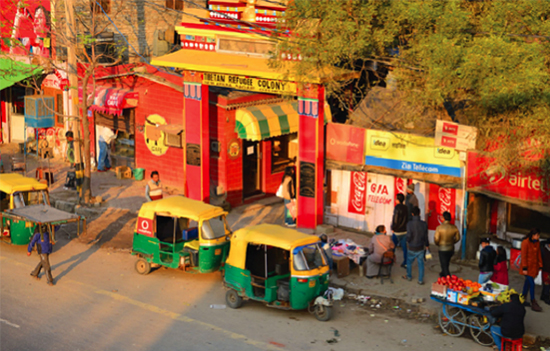
Reference
and credits
A community born out of the Tibetan
refugee camp
A
place that is in India, yet not India. Majnu-ka-Tilla is where the Tibetan
refugees gather and live together.
The
Tibetan neighbourhood lies between the Outer Ring Road going north from the
Central Delhi Railway Station and river Yamuna. There are three main entrances
from the road to the residential area. Once you step inside, you will realise
that this small realm of Tibetan culture wears a different air from the bustle
of Old Delhi.
I
enter a narrow alley. Built like a jaggedly-bending maze, the houses and shops
there are crowded around, as if crammed in and stacked. It seems that this town
itself is made of the backs of the alleys. In the centre was a Gompa (Tibetan
Buddhist temple) and a square-shaped plaza.
The monastery is the first major landmark of Majnu ka Tila’s Tibetan colony, where dishes like Shapta, Lahphing, and Shapaley help make up the menu of most traditional eateries. The community has somewhat succeeded in attaining a balance in preserving their community’s identity and establishing a flourishing commercial hub.

Reference
and credits
Tibetan exiles followed the 14th Dalai
Lama
As an exotic place various kinds of people keep coming and going. Even Delhi’s youth come to eat Tibetan cuisine, and seem to be close to this town where the Tibetans live.
Since
1948, the Chinese have been occupying Tibet. Then in 1959, the Lhasa Uprising
triggered the exile of the 14th reincarnation of their spiritual leader, the
Dalai Lama (who was 14 years old at the time).
Many
of the inhabitants of Majnu-ka-Tilla are Tibetan exiles who followed the 14th
Dalai Lama to India after 1959. They spontaneously gathered in this area along
the banks of the river Yamuna. It was allocated as a Tibetan refugee district,
by the Indian Government, in the 1960s and has now become a community of about 2-3000.
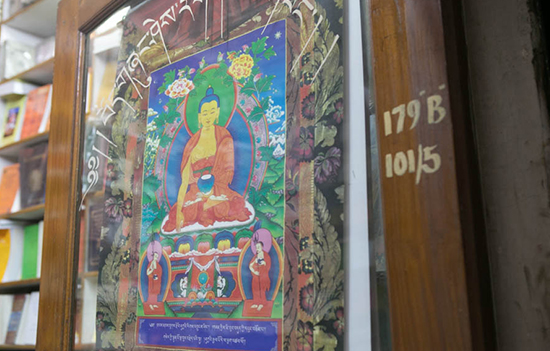
Reference and credits
Night-time at Majnu-ka-Tilla
Accidently
stepping over a sleeping cat, the path gets narrower as I walk. I head into the
narrow maze, towards the end of the street. However, the Majnu-ka-Tilla colony
stretches from south to north spanning a distance of about 1 km, and can be
covered on foot within 15-20 minutes end to end. The road till the bar on the
edge of the colony is dim.
I
reach a peculiar restaurant, which looks like it might appear in a movie.
From the silence along the way there is a sudden change inside of the zinc-roofed building i.e. crowded. Men are enjoying a dice game called “Sho”. There is a ring of people surrounding two carrom boards. With a scenery i.e. rare to find elsewhere in India in the periphery of my vision, I enjoy some Tibetan cuisine.
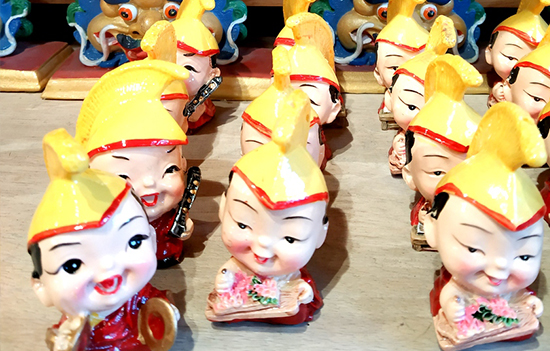 Handicraft at MKT.
Handicraft at MKT.
Reference
and credits
Tibetan Children Village
“TCV or Tibetan Children’s Villages, are residential schools for the children of the Tibetans in Dharamshala, Bylakuppe, Delhi, etc. By the way, the TCV inside the Tibetan colony is a day school, though…”, one person explained in detail.
TCV, operated by the Tibetan government-in-exile, provides education to the children of Tibetan refugees. Tibetan language classes are held in addition to general subjects that are taught in English. “Parents (in Tibet) are at least sending their children to India and leaving them in custody of the TCV.”
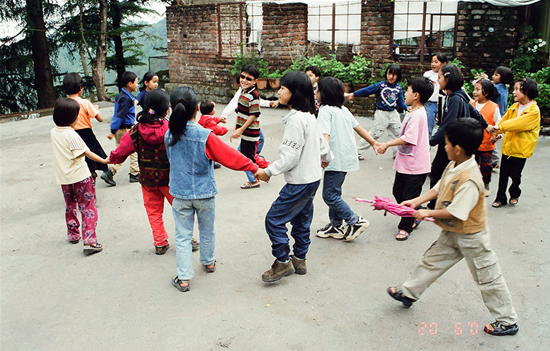 Tibetan school in Mcleodganj, Himachal.
Tibetan school in Mcleodganj, Himachal.
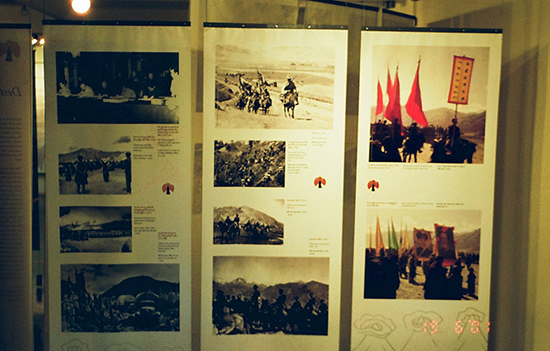 Museum Mcleodganj, Chinese march into Tibet.
Museum Mcleodganj, Chinese march into Tibet.
Also read
Dalai Lama’s escape to India in 1959
Untold stories from Dalai Lama’s First Indian Visit
How
Dalai Lama escaped to Arunachal Pradesh
Other similar places India
India
is home to a large number of Tibetan refugees. Their big settlement is in
Dharamshala, Himachal Pradesh that also hosts the Tibetan Government-in-Exile.
Another settlement is in Bylakuppe, Karnataka. To see
pictures of Bylakuppe
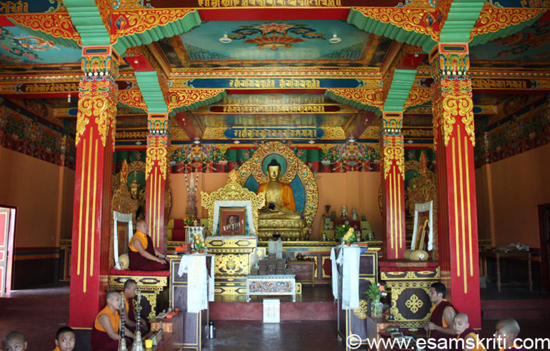 Tibetan Refugees also settled in Tezu, Arunachal Pradesh.
Tibetan Refugees also settled in Tezu, Arunachal Pradesh.
The
Ladakh Buddhist Vihara in Kashmiri Gate was one of the first places in the
Indian plains where Tibetans settled in the early 1960s. In 1963, the then
prime minister Jawaharlal Nehru wrote to several states requesting to grant
permission to and allot land for the Tibetans to set up their settlements. He
subsequently allotted Majnu ka Tilla, spread out over an area of 1.2 acres, for
them.
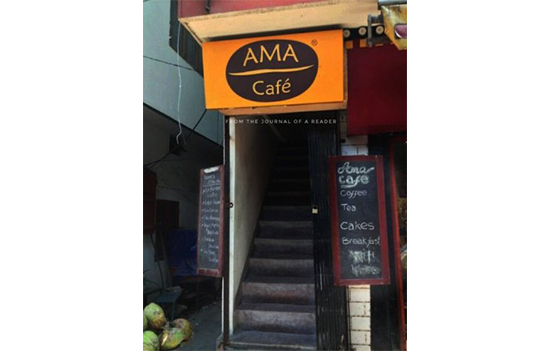 MKT has lots of Cafes.
MKT has lots of Cafes.
Reference
and Credits
As of Today
Today, Majnu ka Tilla is a popular tourist attraction. The settlement is an important transit point for the people of the trans-Himalayan range and conversely a gateway to Tibet for Indian and foreign tourists alike. This ‘Little Tibet’ and the fusion culture on its streets, add variety to the cultural spectrum of Delhi.
Majnu ka Tila is a microcosm of Tibetan life, which is located a pebble’s throw away from Delhi University's North Campus.
Restaurants
like Ama cafe and Dolma are textbook favourites offering Tibetan cuisine like
Thukpa and Laphing. The narrow alleys crowded with houses on each side,
jostling with shops, are similar to any middle-class domestic space, yet different.
As
followers of Buddhism, the prayer wheels and statues of Lord Buddha with
portraits of His Holiness Dalai Lama are an inseparable part of every
household.
The Tibetan Newcomer’s Society was recently established to aid new inhabitants who come from other settlements across India. However, as some people told me, “People do not really vote here. Even the few who are eligible do not have voter ID cards.”
Identity Struggle
Despite
the failure to assimilate politically, the community does not remain untouched
from cultural assimilation; one can hear Bollywood songs being played in the
streets with kids flocking around hawkers. An influx of Korean culture is also
witnessed all around: a restaurant offering Korean cuisine, a departmental
store playing Korean pop music that has not been released in India.
The
struggle for identity is a challenge to find a cultural footing. Majnu-ka-Tilla
may appear like any other residential settlement in North Delhi, with a school,
pharmacy and monastery. However, the prayer flags and distinct handicrafts in
shop windows serve as constant reminders of the heritage of its occupants. The
school comes under the Central Tibetan Schools Administration that in turn is
under the Ministry of Humans Resource Development. It educates children about
their history and their culture.
Colony Distribution
Moving
further into the labyrinth of narrow lanes, you will find a sacred Buddhist
temple. The temple is open to all, always lit-up with diyas with the fragrant aroma of incense sticks wafting about -
a meditative space of harmonic oscillations between creative action and
introspection.
A
few turns deeper, and you will stumble upon a chain of quirky, quaint cafes
serving authentic Korean and Tibetan delicacies, and local karaoke booths.
Majnu
ka Tilla, like every other destination, is best explored in person. The
neighbourhood is thriving because we love everything about it - be it fashion,
food, culture or even the general vibe.
There
are shops selling budget fashion and footwear, jewellery and semi-precious
stones, Tibetan artefacts, and a string of restaurants offering Tibetan
cuisine. When not attending to customers, some of the shopkeepers could be seen
watching popular Hindi comedy shows or reality shows on their smartphones.
 Tibetan lady in main market in Leh.
Tibetan lady in main market in Leh.
Looking ahead
Asked
some of them whether they hope to return to their country in this lifetime. The
Dalai Lama is their guru and they, as followers, will continue to follow him
wherever he takes them.
We
do not get government jobs. All that we get is jobs in private companies. We
are also paid less by these companies as we are refugees. That is not the case in
other foreign countries. Once you become a citizen, everything is equal. They
will even enlist you for jobs.
“Magar yaha jab tak piche nahi padenge, koi
nahi dega (Here, until you chase it, nobody is going to give you anything),” some said laughing.
The purpose of this compilation is to showcase the Tibetan Colony and motivate you to visit it. We have given credits. In case we have missed out on any credits, it is without malafide intent. Do email details to esamskriti108@gmail.com and we shall do the needful.
Also
see Videos
1. Long 27 minutes
2. Short 8.57 minutes
To read all
articles by author
To
see pictures of
1. Mcleodganj
2. Tawang
Monastery
3. Bodh Gaya
4. Great Buddha
Statue
Author Trishna
Patnaik
is a self-taught artist based in Mumbai, Trishna has been practising art for over 14 years. She is now a full-time professional painter pursuing her passion to create and explore to the fullest. She conducts painting workshops across India. She is also an art therapist and healer who works with clients on a one to one basis. Not to forget her quality writings on Indian Art and now Textiles for esamskriti. She fancies the art of creative writing.